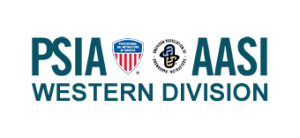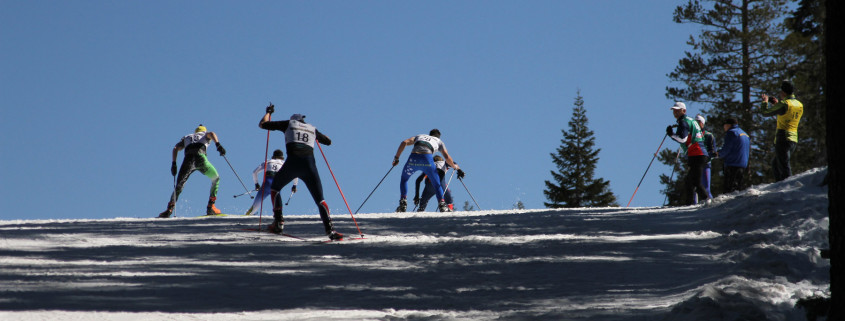Fall Conference Nordic Reports
By Stephen McDonald
I had the opportunity to attend, for my first time, the PSIA Fall Conference (FC) as the Telemark representative for the Western Division. I was joined by eight people representing six divisions and two Psia National Telemark Team members to make up the Telemark Taskforce. Collectively we spent three days together on and off snow collaborating to generate education materials, evaluate the implementation the new Telemark Fundamentals, and to align our national telemark standards among the divisions.
Our efforts started long before the FC began by working together on Basecamp, an online meeting and information sharing site. Starting at last year’s Fall Conference the taskforce started generating questions for a national test bank for Telemark levels 1-3. Leading up to this year’s FC the list of questions was expanded, edited, and added to an online test bank available to all divisions. By working remotely this was finished and uploaded prior to the event.
At the last FC the Telemark Taskforce generated and adopted the six Telemark Fundamentals. They were introduced to division examiners last season and published in the Fall 2017 edition of 32 Degrees (page 98). At FC this year we looked at how the telemark fundamentals were received and how implementation was going. The consensus was that the fundamentals were a positive addition and overall were a success, although some minor refinements were needed. As a group we worked to discuss all the fundamentals and decided to slightly reword one to make it more accurately describe the use of the lead change in telemark skiing.
Most of our time at FC was spent working together to write learning outcomes for level one telemark candidates. This process began with some online learning sessions and conference calls to learn the process of writing learning outcomes and assigning learning experiences, assessment activities, and assessment criteria for those outcomes. This allowed us to jump into collaborating amongst divisions to start applying learning outcomes to the level one national telemark standards. This was a messy process that forced us to change the way our standards are written and how they can be improved to better meet the needs of everyone involved in the learning and certifying experience. The goal is to create a statement that clearly defines what one would expect to achieve upon successful completion of certification (the Learning Outcome). For each learning outcome we attempt to create a clear description of achievement and performance (the Assessment Criteria). We then outlined activities the candidate will participate in to gain the knowledge and skills required to pass a certification exam (the Learning Experiences). Finally, we identify and list tasks the candidate can be assigned during the certification exam as evidence of learning (the Assessment Activities).
This process was not easy and involved a lot conversation among division representatives to convey everyone’s expectations of each certification level. Our time spent on snow made everything seem clear and then when we returned indoors it proved difficult to apply our thoughts to paper. We spent a lot of time indoors “word smithing” and finding common language. We completed part of the level one learning outcomes during the FC, but in the process learned how to apply learning outcomes to national standards. We hope to complete level 1 this season and move onto levels 2-3. Working together amongst divisions to apply learning outcomes will better align the divisions by painting a clear picture of what is involved to obtain the skills and knowledge for each certification level and how they will be tested. Overall the experience of Fall Conference was painful, enlightening, and entertaining. Plus, I got to spend my first few days making turns for the season with some pretty good telemarkers and spent my down time hanging around many great like-minded people who love sharing the snow sports experience.





